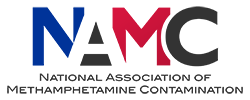Assessment, remediation and validation: Former clandestine drug laboratories and other methamphetamine contaminated properties.
These Guidelines have been prepared by the Attorney General’s Department and the ACC with the assistance of industry and government specialists acknowledged in this document. They are intended to provide a framework within which appropriate regulatory authorities and suitably qualified environmental specialists may administer and conduct investigation and remediation of potentially contaminated sites resulting from the operation of clandestine drug laboratories.
The purpose of this document is to highlight the potential public health risks associated with chemical contamination from clandestine laboratories (clan labs), in particular former clan labs. The potential risks from methylamphetamine labs are also relevant to contamination derived from the smoking of crystal methylamphetamine
The clandestine manufacture and use of methamphetamine can result in contamination of residential properties. It is understood that this contamination remains in homes for a significant period, however there are a lack of data available to understand the health effects of exposure to environmental methamphetamine contamination (third hand exposure). Our study collected information from 63 individuals in 25 separate case studies where the subjects had unwittingly suffered third-hand exposure to methamphetamine from former manufacture, use, or both. Data included environmental contamination data, information on subjects’ health effects, and evidence of exposure using hair analysis. This study identified a range of health effects that occur from residing in these properties, including behavioural effects or issues, sleep issues, respiratory effects, skin and eye effects, and headaches.
